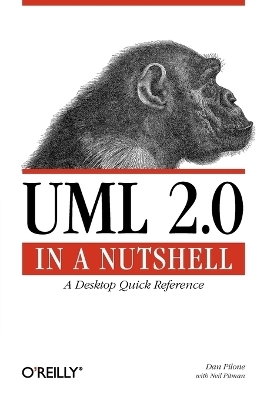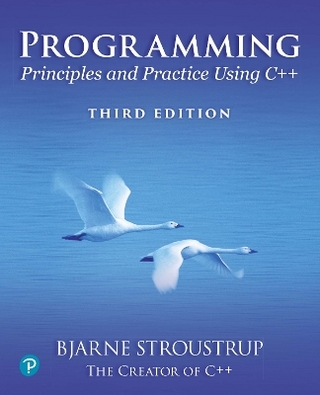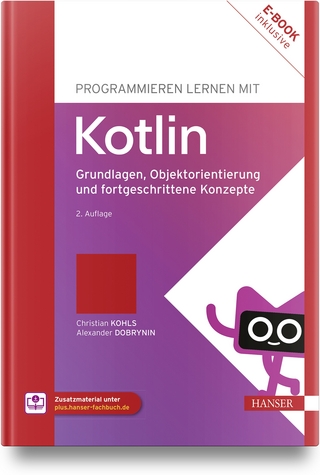
UML 2.0 in a Nutshell
O'Reilly Media (Verlag)
978-0-596-00795-9 (ISBN)
System developers have used modeling languages for decades to specify, visualize, construct, and document systems. The Unified Modeling Language (UML) is one of those languages. UML makes it possible for team members to collaborate by providing a common language that applies to a multitude of different systems. Essentially, it enables you to communicate solutions in a consistent, tool-supported language. Today, UML has become the standard method for modeling software systems, which means you're probably confronting this rich and expressive language more than ever before. And even though you may not write UML diagrams yourself, you'll still need to interpret diagrams written by others. UML 2.0 in a Nutshell from O'Reilly feels your pain. It's been crafted for professionals like you who must read, create, and understand system artifacts expressed using UML. Furthermore, it's been fully revised to cover version 2.0 of the language. This comprehensive new edition not only provides a quick-reference to all UML 2.0 diagram types, it also explains key concepts in a way that appeals to readers already familiar with UML or object-oriented programming concepts.
Topics include: * The role and value of UML in projects * The object-oriented paradigm and its relation to the UML * An integrated approach to UML diagrams * Class and Object, Use Case, Sequence, Collaboration, Statechart, Activity, Component, and Deployment Diagrams * Extension Mechanisms * The Object Constraint Language (OCL) If you're new to UML, a tutorial with realistic examples has even been included to help you quickly familiarize yourself with the system.
Dan Pilone is Rational Certified in OOAD, RUP, and Rose. His previous employer was a Rational Partner and Dan has taught (formally as well as informally) quite a few UML classes for Hughes, ARINC, UPS, Georgia Systems Operation Center (GSOC), and the Naval Research Laboratory (NRL). As a software architect for clients, Dan has made extensive use of UML (in all views of the architecture) to help convey information to management, developers, team leads, and requirement folks (doing use case analysis in a UML-like fashion). Dan is also Sun J2EE Enterprise Architect certified, which required him to submit his own EJB designs using UML sequence, class, and collaboration diagrams. Dan has worked at Hughes Inc. developing a satellite communication system for which they did real-time UML modeling, and also large numbers of State Diagrams to model the acquisition/control stages.
Preface 1. Fundamentals of UML Getting Started Background UML Basics UML Specifications Putting UML to Work Modeling UML Rules of Thumb 2. Class Diagrams Classes Attributes Operations Methods Abstract Classes Relationships Interfaces Templates Variations on Class Diagrams 3. Package Diagrams Representation Visibility Importing and Accessing Packages Merging Packages Variations on Package Diagrams 4. Composite Structures Composite Structures Collaborations Collaboration Occurrences 5. Component Diagrams Components Component Views 6. Deployment Diagrams Artifacts Nodes Deployment Variations on Deployment Diagrams 7. Use Case Diagrams Use Cases Actors Advanced Use Case Modeling Use Case Scope 8. Statechart Diagrams Behavioral State Machines States State Machine Extension Protocol State Machines Pseudostates Event Processing Variations on Statechart Diagrams 9. Activity Diagrams Activities and Actions Tokens Activity Nodes Advanced Activity Modeling 10. Interaction Diagrams What Are Interactions? Interaction Participants Messages Execution Occurrences State Invariants Event Occurrences Traces Combined Fragments Interaction Occurrences Decomposition Continuations Sequence Timing Alternate Interaction Notations 11. Tagged Values, Stereotypes, and UML Profiles Modeling and UML in Context Stereotypes Tagged Values Constraints UML Profiles Tools and How They Use Profiles 12. Effective Diagramming Wallpaper Diagrams Sprawling Scope One Diagram/One Abstraction Besides UML A. MDA: Model-Driven Architecture B. The Object Constraint Language Index
| Erscheint lt. Verlag | 26.7.2005 |
|---|---|
| Reihe/Serie | In a Nutshell (O'Reilly) |
| Verlagsort | Sebastopol |
| Sprache | englisch |
| Maße | 150 x 225 mm |
| Einbandart | Paperback |
| Themenwelt | Informatik ► Software Entwicklung ► Objektorientierung |
| Informatik ► Software Entwicklung ► UML | |
| ISBN-10 | 0-596-00795-7 / 0596007957 |
| ISBN-13 | 978-0-596-00795-9 / 9780596007959 |
| Zustand | Neuware |
| Informationen gemäß Produktsicherheitsverordnung (GPSR) | |
| Haben Sie eine Frage zum Produkt? |
aus dem Bereich


